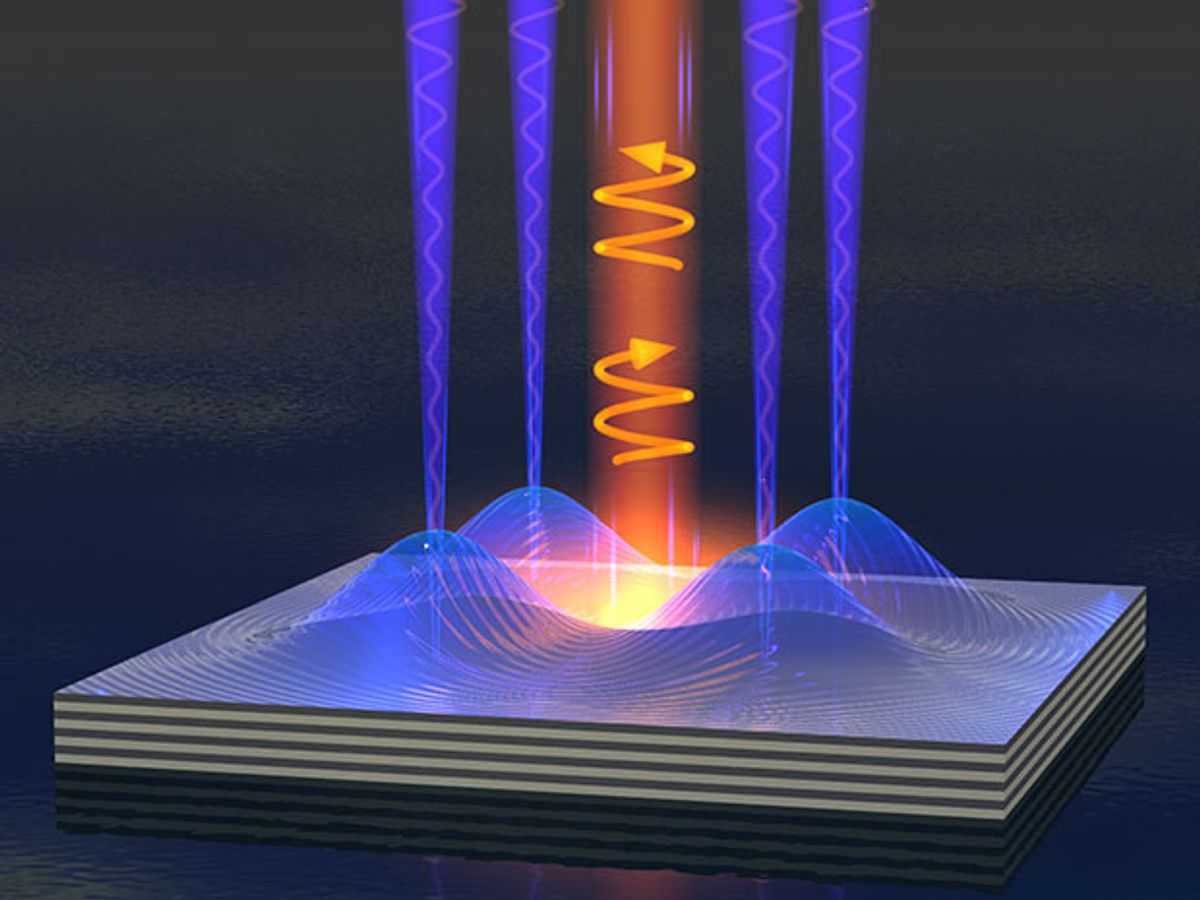It took 70 years before the existence of Bose-Einstein condensates (BECs), so-called superatoms, could be proven in the lab. BECs are collections of particles called bosons (such as the photon), that have integer spin and can occupy the same space with the same quantum state, forming a condensate that behaves like a single atom. At first, these condensates—first predicted by Satyendra Nath Bose and Albert Einstein in the mid-1920s—could only be obtained by freezing out collections of particular particles with temperatures close to absolute zero. Room-temperature BECs appeared in the lab within two years. And more recently, researchers have been looking to turn these superatoms from a laboratory curiosity into lasers and other practical things, with mixed results.
Among these attempts at a practical BEC are those composed of exciton polaritons. These quasiparticles are amalgams of photons and electron-hole pairs (excitons), and they can carry information both in the form of optical polarization, the property of the photon, and in the form of spin, associated with the exiton. However, what made polaritons impractical was that their spin could only be controlled by light or by strong magnetic fields.
In yesterday’s issue of Nature Materials, a team of researchers led by physicist Jeremy Baumberg at the University of Cambridge report that they could use low-energy voltage pulses to read and write data in a BEC formed by polaritons trapped in several thin layers of semiconductor material.
If a sufficient number of polaritons are brought together they condense to form a Bose-Einstein condensate. The BEC remains in a steady state by continuously being irradiated with a pump laser that counteracts the natural losses of the system, explains George Deligeorgis, a physicist at the Institute of Electronic Structure and Laser at Heraklion in Crete.
The polariton BEC was squeezed between two metallic contacts, and the researchers found that by applying a tiny voltage pulse over these contacts they could change the spin state of the condensate. Because all particles in a BEC occupy the same quantum state, the whole BEC responds in unison, assuming one of the two spin states, up or down. “It operates like a memory cell, and the information is kept in the spin state,” says Deligeorgis.
The stored state can be read out by the light the condensate emits continuously. The photons that are emitted by the polariton condensate carry the spin signature of the spin state. One spin state will result in light with right-handed circular polarization and the other spin state will result in left-handed circular polarization.
The experiment was the lucky outcome of a guess. “We had some understanding that this could be possible, but it was not self-evident until we saw the experimental result,” says Deligeorgis.
Deligeorgis says his main goal is new kinds of optical circuits. And for these, their device has some interesting properties. It forms a bridge between the voltage-controlled pure electronics and optical devices. Using voltage to control the data carried by light in photonic circuits requires a lot of energy, he explains. “The important step is that we use extremely low power in the voltage pulse to switch the optical state. The switch is actually bistable. The voltage is only required to switch the device between states, and the total energy required is about 0.8 femtojoule. This is a first,” says Deligeorgis.
A second advantage is the clarity of the optical signal. “You have here a pure, 100-percent polarization state, in contrast to spintronics, where you have both states, and one state is stronger than the other,” says Deligeorgis. He also reports that the switching speed is in the gigahertz range.
Will the complexity of the device be a problem? “It is based on normal processing techniques, and there is no reason that you cannot scale it up in complexity,” concludes Deligeorgis.



